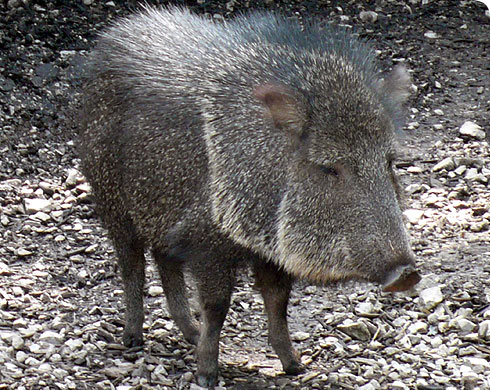Biology and behaviour
Biology
Chacoan peccaries wander over large areas in search of food, but each herd is generally restricted to its home range. It uses scent markings to delimit its territory.
Up to 2 young are born between September and December to coincide with the short rainy season.
The Chacoan peccary was thought to be the largest living peccary, but another new and even larger species, Pecari maximus, has now been described from live individuals in Brazil.
The Chacoan peccary is brown to blackish grey, with a dark stripe along its back and white markings on it shoulders.
It differs from other peccaries as it has:
- longer ears, snout and tail
- a third toe on the hind foot - all other peccary species have 2
Behaviour
Chacoan peccaries are vocal animals and keep in contact with one another using a broad range of grunts and teeth chattering.
This is important for these social animals as they inhabit dense undergrowth where visibility is reduced.
As defence, they often form a protective wall of bodies facing any adversary - this makes them particularly vulnerable to human hunters.
